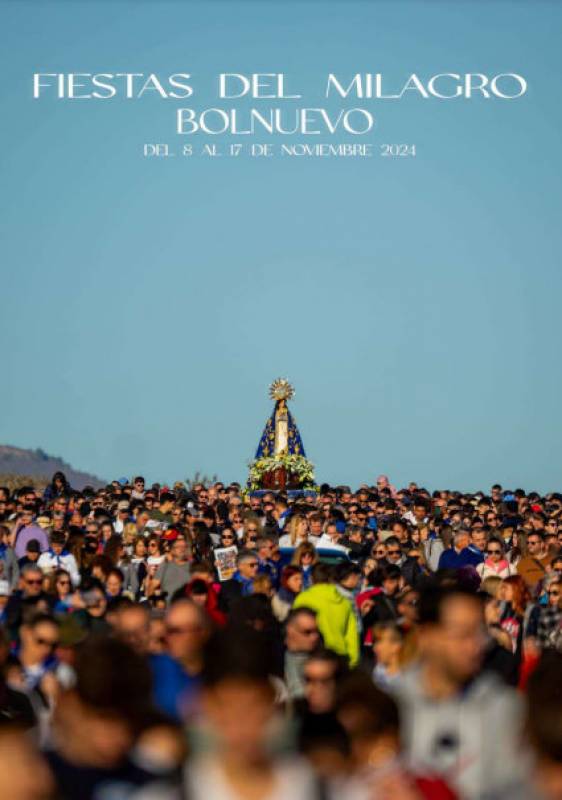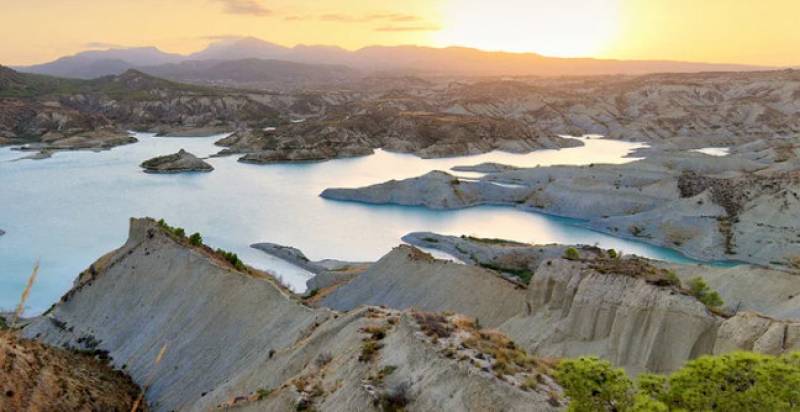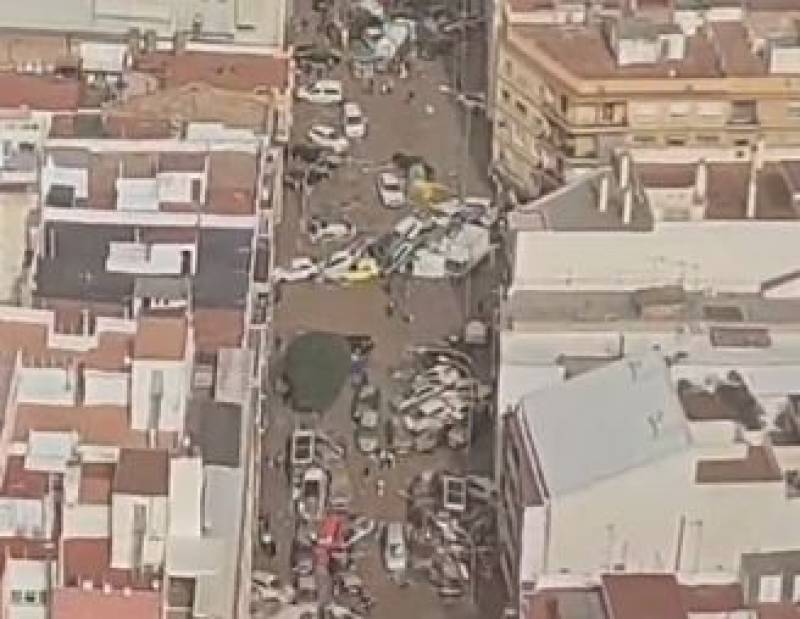- Region
- Águilas
- Alhama de Murcia
- Jumilla
- Lorca
- Los Alcázares
- Mazarrón
- San Javier
-
ALL AREAS & TOWNS
- AREAS
- SOUTH WEST
- MAR MENOR
- MURCIA CITY & CENTRAL
- NORTH & NORTH WEST
- TOWNS
- Abanilla
- Abarán
- Aguilas
- Alamillo
- Alcantarilla
- Aledo
- Alhama de Murcia
- Archena
- Balsicas
- Blanca
- Bolnuevo
- Bullas
- Cañadas del Romero
- Cabo de Palos
- Calasparra
- Camping Bolnuevo
- Campo De Ricote
- Camposol
- Canada De La Lena
- Caravaca de la Cruz
- Cartagena
- Cehegin
- Ceuti
- Cieza
- Condado de Alhama
- Corvera
- Costa Cálida
- Cuevas De Almanzora
- Cuevas de Reyllo
- El Carmoli
- El Mojon
- El Molino (Puerto Lumbreras)
- El Pareton / Cantareros
- El Raso
- El Valle Golf Resort
- Fortuna
- Fuente Alamo
- Hacienda del Alamo Golf Resort
- Hacienda Riquelme Golf Resort
- Isla Plana
- Islas Menores & Mar de Cristal
- Jumilla
- La Azohia
- La Charca
- La Manga Club
- La Manga del Mar Menor
- La Pinilla
- La Puebla
- La Torre
- La Torre Golf Resort
- La Unión
- Las Palas
- Las Ramblas
- Las Ramblas Golf
- Las Torres de Cotillas
- Leiva
- Librilla
- Lo Pagan
- Lo Santiago
- Lorca
- Lorquí
- Los Alcázares
- Los Balcones
- Los Belones
- Los Canovas
- Los Nietos
- Los Perez (Tallante)
- Los Urrutias
- Los Ventorrillos
- Mar De Cristal
- Mar Menor
- Mar Menor Golf Resort
- Mazarrón
- Mazarrón Country Club
- Molina de Segura
- Moratalla
- Mula
- Murcia City
- Murcia Property
- Pareton
- Peraleja Golf Resort
- Perin
- Pilar de la Horadada
- Pinar de Campoverde
- Pinoso
- Playa Honda
- Playa Honda / Playa Paraíso
- Pliego
- Portmán
- Pozo Estrecho
- Puerto de Mazarrón
- Puerto Lumbreras
- Puntas De Calnegre
- Region of Murcia
- Ricote
- Roda Golf Resort
- Roldan
- Roldan and Lo Ferro
- San Javier
- San Pedro del Pinatar
- Santiago de la Ribera
- Sierra Espuña
- Sucina
- Tallante
- Terrazas de la Torre Golf Resort
- Torre Pacheco
- Totana
- What's On Weekly Bulletin
- Yecla


- EDITIONS:
 Spanish News Today
Spanish News Today
 Alicante Today
Alicante Today
 Andalucia Today
Andalucia Today
article_detail
The Romería and annual sardine festival of Bolnuevo
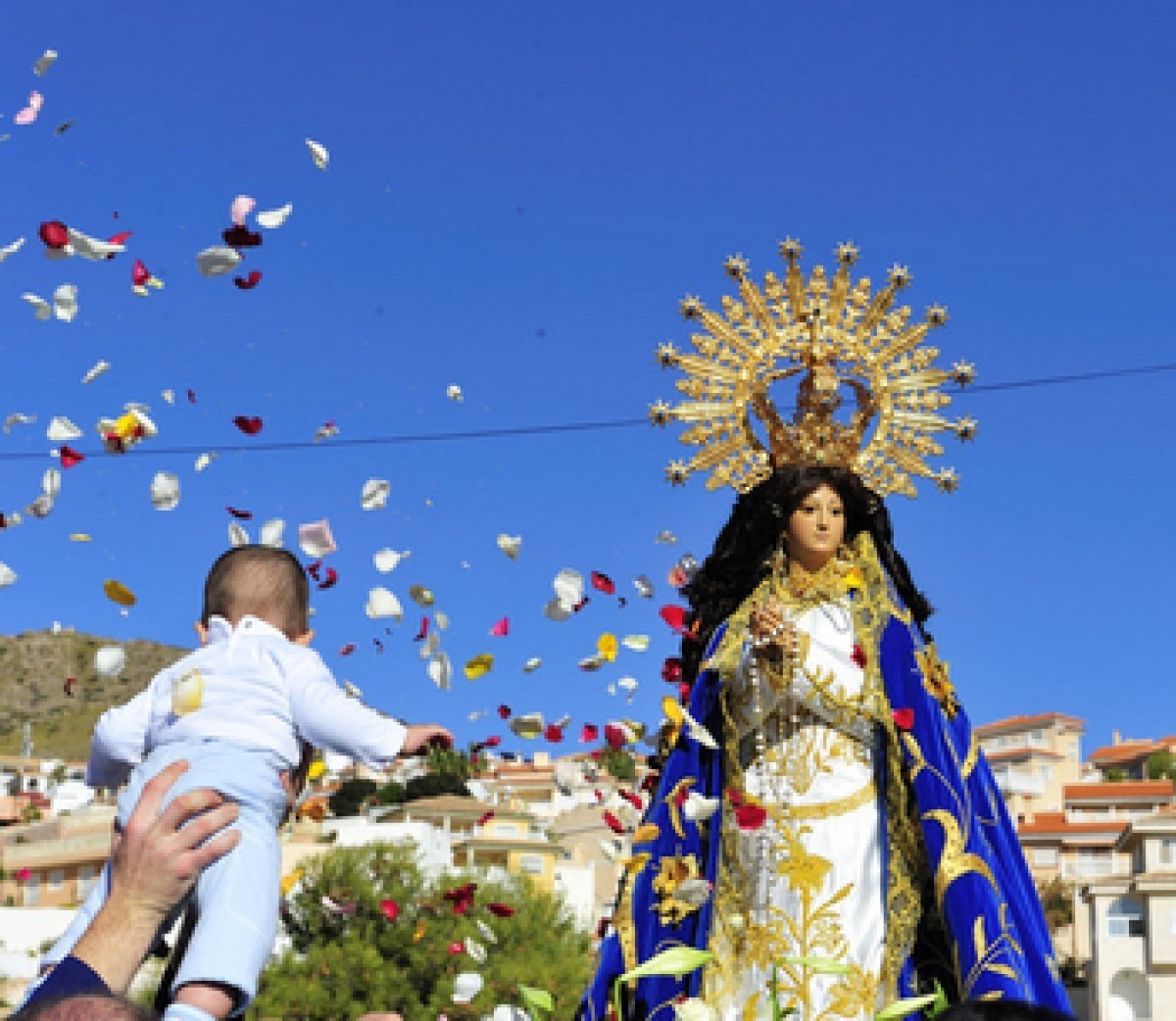 Known by the expat community as the Bolnuevo Sardine Festival
Known by the expat community as the Bolnuevo Sardine Festival
The Miracle of La Purísima took place in Mazarrón on 17th November 1585 and is commemorated annually on the same date when the Virgen de la Purísima is reputed to have saved the town from a Berber pirate attack. The following Sunday the Romería de Bolnuevo or Romería del Milagro is held as the figure of the Virgin is carried from Mazarrón to her sanctuary in Bolnuevo.
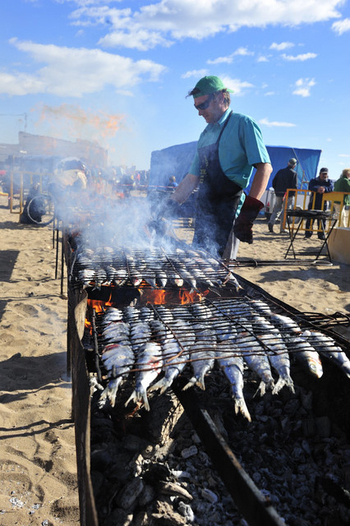 This is the second Romería, after the "subida", in which the image is carried from Bolnuevo into Mazarrón, takes place a week earlier.
This is the second Romería, after the "subida", in which the image is carried from Bolnuevo into Mazarrón, takes place a week earlier.
Following her arrival in Bolnuevo thousands of people head to the beach, where they set up camp and celebrate with food and barbeques, the council traditionally offering barbecued sardines to those attending, and the event has become known by many in the expat community as the Bolnuevo Sardine Festival.
The Miracle of Mazarrón
Back in 1585 Mazarrón was a mining town, its residents working in the mines and the salt flats, farming the surrounding fields or fishing to earn a living.
Southern Spain had been occupied by the Moors in 713 and the Moors then spread across the Peninsula, where they remained dominant until the middle of the 13th century. Most of Spain was then reconquered by Christian forces, forcing the Moors back into the Kingdom of Granada, and in 1492 the final expulsion took place and tens of thousands of Muslims who refused to convert to Christianity were forced to leave Spain. Many then launched pirate attacks from northern Africa on the coast they had once owned and lost .
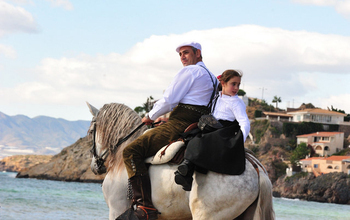 The whole of the southern Spanish coastline was subject to frequent attack, the pirates carrying off villagers (to ransom or sell in slave markets), livestock and anything which could be sold, including crops.
The whole of the southern Spanish coastline was subject to frequent attack, the pirates carrying off villagers (to ransom or sell in slave markets), livestock and anything which could be sold, including crops.
This is well documented, the watchtowers of the Torre de los Caballos and the Torre de la Cala del Moro Santo in Mazarrón were just parts of a chain of lookout points along the coast to warn of attack.
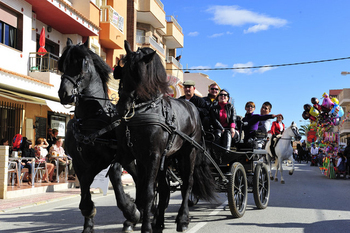 One document relates that in May of 1573 the fishing boats of Mazarrón were stolen and in December of the same year 25 boats are recorded as having menaced the coast. All of the townspeople hiding in caves were found and taken away.
One document relates that in May of 1573 the fishing boats of Mazarrón were stolen and in December of the same year 25 boats are recorded as having menaced the coast. All of the townspeople hiding in caves were found and taken away.
It was against this backdrop that the event known as the Miracle of Mazarrón took place in 1585.
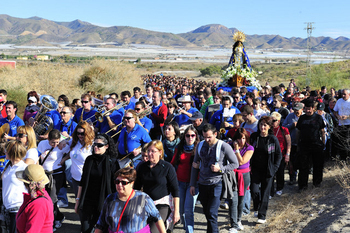 On the 17th November Berber pirates attacked Mazarrón in an expedition headed by the famous pirate Morato Arraez, well known across Murcia for his incursions and attacks and remembered every year in the Berber Fiestas of Los Alcázares. On board his ship was a man called Mami, who had once worked in Mazarrón but was now working as a servant to the pirate.
On the 17th November Berber pirates attacked Mazarrón in an expedition headed by the famous pirate Morato Arraez, well known across Murcia for his incursions and attacks and remembered every year in the Berber Fiestas of Los Alcázares. On board his ship was a man called Mami, who had once worked in Mazarrón but was now working as a servant to the pirate.
Legend says that Mami's first step in the miracle of the Virgin of the Purisima was to persuade his captain to hold back from a full attack and send out a scouting party, because of the good treatment he had received when working in Mazarrón.
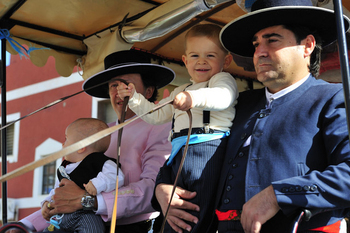 Then, when the scouting party approached the village while men sat outside playing cards, the church bells rang out to announce nightfall, but for a reason no-one has ever managed to explain, that night the wrong bell rope was pulled and the alarm signal rang, alerting the town to the approach of pirates.
Then, when the scouting party approached the village while men sat outside playing cards, the church bells rang out to announce nightfall, but for a reason no-one has ever managed to explain, that night the wrong bell rope was pulled and the alarm signal rang, alerting the town to the approach of pirates.
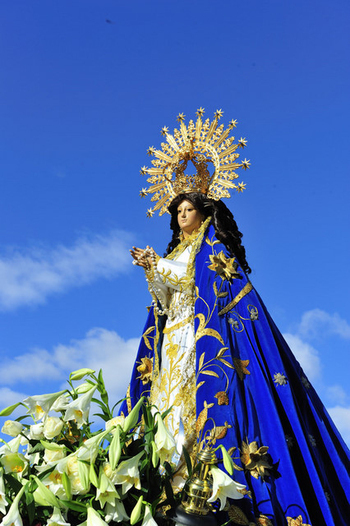 The card players leapt to their feet, one man shouting out in frustration that he had 14 horses, a term that apparently was significant to the card players, but which led the muslim invaders to assume that a mounted force had anticipated their attack and that 14 horsemen awaited them: as a result they rushed back to the beach.
The card players leapt to their feet, one man shouting out in frustration that he had 14 horses, a term that apparently was significant to the card players, but which led the muslim invaders to assume that a mounted force had anticipated their attack and that 14 horsemen awaited them: as a result they rushed back to the beach.
At this point, a woman appeared on the beach, radiating light, her arms raised to the heavens, a spectacle which terrorized the scouts to such an extent that they fled, throwing their weapons into the sea and sailing away from Mazarrón. The village was thus saved from certain pillage and probable destruction.
The villagers went to the church of La Concepción to give thanks for their delivery and realized to their amazement that the lamp shining out next to the statue of the Virgin was burning without oil, that the head of the Virgin was turned towards the sea, and her robe was wet with seawater and peppered with sand.
Many testified to having seen this miraculous event, and this was borne out years later when white flowers mysteriously bloomed on the beach, announcing to all that there had indeed been a miracle in Bolnuevo.
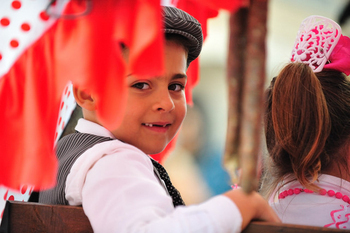
Each year the figure of the Virgin is carried from her church in Bolnuevo into Mazarrón, then returned in triumph to Bolnuevo a week later. This is an extremely popular Romeria for both Spanish and expats alike, thousands gathering on the beach following the Romeria to enjoy a barbecue and convivial afternoon.
article_detail
Contact Murcia Today: Editorial 000 000 000 /
Office 000 000 000

